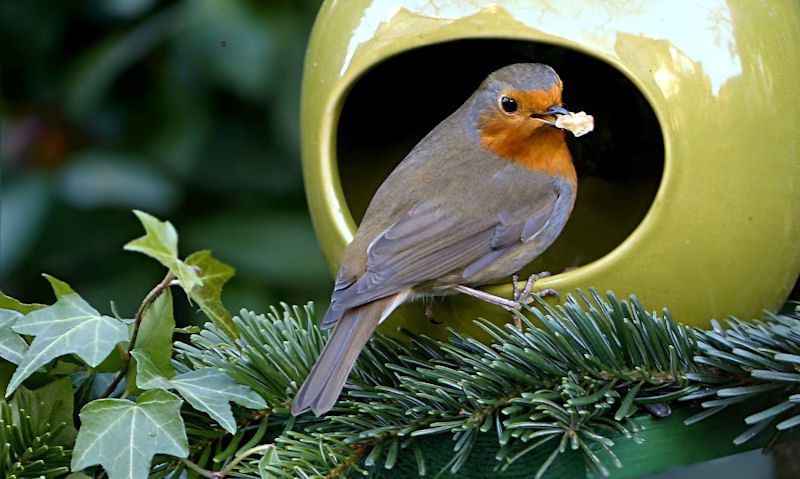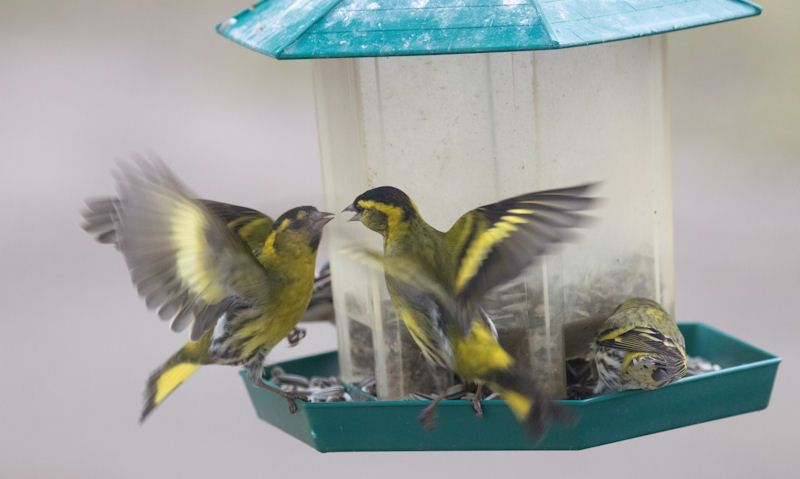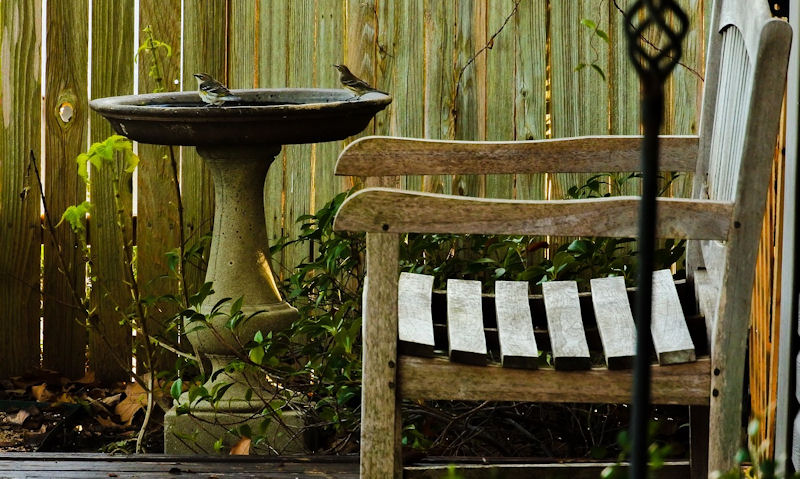Where to put a Robin nest box
Craft a special location in your garden for a Robin to nest in a bird box, placement of said box is vital, but keeping the birds safe is your priority.
Importance of Robin nest box placement is vital for attracting them to successfully setup home in your garden. Always apply the usual rules for setting up a bird box; facing north/east so out of westerly winds and sunshine - all while burying box deep into ivy or leafy area.
People whose wish to force a Robin to nest won't always get what they want mind you, as the Wren has similar nesting habits to a Robin so may nest instead.
If you don't get regular visits to your garden from the UK's smallest garden bird, the Wren - then you should be in safe hands with only Robins nesting.
Where you site the bird box will depend on many factors; though it should always be out of direct sunlight, thus avoiding strong westerly wings.
With that in mind, always site the Robin bird box north/east, or anywhere in between.
If you're avoiding direct sunlight, then avoiding strong wings and gales will follow suite, so no need to worry about both issues.
If you have blooming, nuisance ivy growing in an area in your garden, well it might be pain, it actually might be the idea location.
Taking into consideration being out of direct sunlight, the ivy makes for ideal hiding place but always make sure its at least 2 metres off the ground.
Easy to install box
When setting up a bird box deep into ivy or blooming growth of leaf's, its essential its fixed to an area that is not hard to access later.
When the nesting season is over you'll need to gain access to the box to clean it out; that's not before you've checked to see if there's no occupants present.
To be able to clean the box you need to reach up and pull it off its fixingas in the rear.
Out of reach it in a difficult position will make it hard to grab and bring down with care, if you're forced to reach where you can't get to, chances are the box fixing could break.
And well the Robin nesting box placement should be no more than 2 metres off the ground, that's only 6 to 7 feet high, so should be within reach.
Face Robin box north/east
If you visit our highly detailed instructions on where to site bird boxes for a multitude of wild birds that nest in your garden, its all the advice you'll need.
With that in mind, let's delve a little deeper into where to site a Robin bird box where all the usual rules applied; amongst them, the box should always be facing north/east.
When we say north/east, the box can be facing north or east exactly, but facing the box anywhere in between north and east is perfectly acceptable.
You see, as the winds hit Britain from the south/west - and anywhere in between - the north/east facing bird box always puts has its back to the wind/rain.
And well a Robin bird box is likely to be fixed to a trellis, tree or fence with ivy or blooming leaf's for cover, it has much more support in harsh weather.
Robin nesting box placement
When setting up a Robin bird box, placement of said wooden nesting box for Robins plays an important rule, and will finally decide if a Robin will nest or not.
Well we've mentioned previously the box should be within reach for you to both setup and be within reach to clean, placement of box is your number one priority.
However, priority of bird box location should never jeopardise the occupants during the nesting season, so it should be alteast 2 metres off the ground, facing north/east always.
That's also includes making sure the box is always out of reach of predators such as cats, with enough cover to keep it clear from predatory, larger birds.
Placement of Robin bird box should be sited deep into ivy or a leafy area; it could be blooming leaf's on a trellis, to creepers or wild ivy growing up a fence or wall of house.
Keep it out of sight of bird feeders but buried deep enough for the blooming ivy, leaf's or plants to offer suitable cover.
No obstructions, clear flight path
Wherever you site a bird box for Robins, use your common sense by making sure there's no obstructions for the birds to access, or when they vacate the box any time.
When allowing ivy or plants to grow up and around the bird box, a little cover can be vital for obscuring the Robin's nesting area from predators and people.
But during the course of the nesting season the natural growth of plants and ivy will go from being vital, to being a clear nuisance.
In the case of ivy it will continue to grow until its cut back or pulled down.
So with ivy especially, you'll need to get out the hedge shears and quietly cut the ivy from the routes, being careful not to disturb the adults or chicks in the box.
That means no electrical garden tools as to not scare off the birds.
Clear flight path only refers to allowing the Robin to fly back to the open fronted bird box with ease; likewise so it can fly away looking for its daily intake of food and water.
Height of 2 metres
Its common practice to always setup a bird box for all wild birds that nest in boxes from 2 to 4 metres off the ground.
Not so for Robins, they're a little more picky and would prefer a box to be setup actually 2 metres off the ground - though give or take a few inches is no problem.
The height of 2 metres is approximately 6.5 feet, therefore the height should be perfectly acceptable for most adults to setup on there own.
It may be tempting to locate the box further down if ivy or natural cover doesn't reach this height, but don't.
Said Robin bird box will become into reach of ground predators such as cats or foxes, and as it has a large open front, it would be easy for all common bird predators to take the eggs or chicks.
Summary
Where to put a Robin bird box relies heavily on your garden, so scout a suitable location taking into consideration ivy or plant cover 2 metres off the ground.
That also goes for making sure the box is always facing north/east.
Setting up a box for Robin's to nest well facing south/west or anywhere in between is fine, providing there's plentiful shade and cover during the course of the day.
This cover or shaded area should not course a problem for the birds; a clear flight path should always be applied, though a little natural cover from plants is vital.
Bird box placement should be buried in ivy or plants, well the box is fixed securely to a wall, fence or tree trunk at least 2 metres off the ground.


